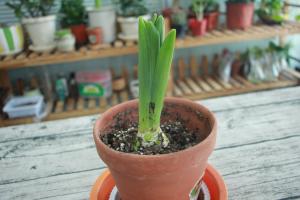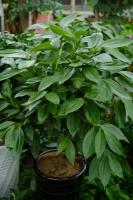Are Full Spectrum LED Lights Good for Plants?
When it comes to indoor gardening, the quality of light is crucial. While natural sunlight is the best, it's not always possible to provide it in sufficient quantities. In such cases, artificial light sources, such as LED lights, can be used for growing plants indoors. Full spectrum LED grow lights have gained popularity among indoor gardeners in recent years due to their ability to provide a broad range of light wavelengths that plants require for optimal growth. But are they really good for plants?
What are Full Spectrum LED Lights?
Full spectrum LED grow lights are designed to mimic natural sunlight as closely as possible. They provide a wide range of light wavelengths, including red, blue, green, yellow, and white light. The red and blue wavelengths are the most critical for plant growth, as they are responsible for the processes of photosynthesis and cellulose production. The green and yellow wavelengths are also important as they contribute to overall plant growth and health. Full spectrum LED grow lights are also energy-efficient and last longer than traditional lighting sources, making them a popular choice among indoor gardeners.
Benefits of Full Spectrum LED Lights for Plants
One of the primary benefits of full spectrum LED grow lights is that they can provide plants with light in the exact wavelengths that they need for optimal growth. This means that indoor gardeners can control the amount and intensity of light that their plants receive, ensuring maximum growth and yield. Additionally, full spectrum LED grow lights emit less heat than traditional lighting sources, reducing the risk of heat damage to plants. This also makes them more energy-efficient as they require less power to operate than other lighting sources.
Factors to Consider
While full spectrum LED grow lights are generally good for plants, there are a few factors to consider before investing in them. First, they can be expensive compared to other lighting sources, so it's important to weigh the costs and benefits before purchasing. Second, the quality of the LED lights can vary, so it's essential to research the manufacturer and look for reviews before making a purchase. Finally, some plants may require specific light wavelengths for optimal growth, so it's important to research the specific needs of the plants being grown before selecting a full spectrum LED grow light.
Conclusion
Full spectrum LED grow lights can be an excellent choice for indoor gardening as they provide plants with a broad range of light wavelengths for optimal growth, are energy-efficient, and emit less heat than traditional lighting sources. However, they can be expensive, quality can vary, and specific plant requirements should be considered before purchasing. As with any indoor gardening decision, it's essential to do research and make informed choices to ensure the best possible outcomes for your plants.

 how many times do yo...
how many times do yo... how many planted tre...
how many planted tre... how many pine trees ...
how many pine trees ... how many pecan trees...
how many pecan trees... how many plants comp...
how many plants comp... how many plants can ...
how many plants can ... how many plants and ...
how many plants and ... how many pepper plan...
how many pepper plan...






























